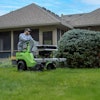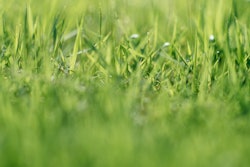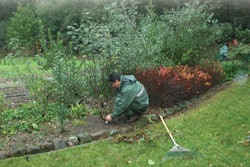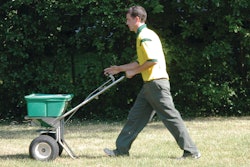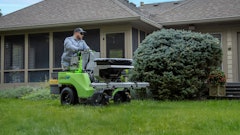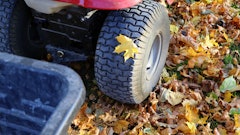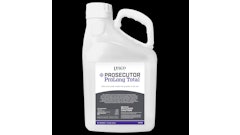As the bright springtime sunshine and warm weather encourage new growth from lawns, homeowners around the country are stomping their grass in dismay. For many, it seems that despite their best efforts, they can never quite grow the perfect lawn. Excepting southern climes that stay warm enough for winter lawns, most home green spaces go dormant during the cold season. Yet, after the snows melt and the ground softens, homeowners are disappointed to find that three seasons of diligent care made no difference, and springtime has brought only patchy, yellow, dead-and-ugly grass.
Fortunately, few lawn problems have never been seen before. Grass pathologists can explain the signs of America’s six most common unsightly lawn diseases of the spring and what can be done to prevent them for the seasons to come.
1. Desiccation
When most people think of dry lawns, they imagine the sweltering summertime, when the sun is at its highest and hottest. In most places in the U.S., winters are cold and wet, and snowfall shields grass from chilly winds. However, the past few years have seen brutally cold winters with little precipitation around the country, creating intensely cold, dry environments that are difficult for plants.
Summer desiccation can occur, but is actually much more common in spring, after long winters without snowfall. During the cold, dark season, few homeowners think to protect their grass from the weather, and severe damage occurs. This lawn disease is characterized by huge areas of dry, dead grass, which should respond well to reseeding and nitrogen application when the weather starts warming up. To prevent desiccation from occurring, homeowners should invest in a cold-resistant turf, like bentgrass.
2. Gray Snow Mold
Even after a moist, snowy winter, lawns can have problems. After 60 consecutive days of snow cover, grass becomes the perfect environment for gray snow mold, which forms in semi-circular patches around a yard. The fungus tends to mat longer blades and form into nest-like formations, called sclerotia, which look like small brown peas.
While homeowners can’t control how much snow falls every winter, they can mitigate the effects of gray snow mold with regular mowing throughout fall. Additionally, allowing the grass to dry out in early spring may kill the fungus before it spreads and does serious damage.
3. Large Patch
In early spring, some lawns start to develop multiple yellow or tan splotches that range from 2 to 8 feet in diameter. If left alone, the diseased areas will grow together, forming a massive diseased area that is difficult to remedy.
Large patch is a rough diagnosis because the disease stems from multiple mistakes made throughout the year. Most commonly, too much moisture and too much nitrogen will cause the grass to die slowly during dormant winter months, and the accumulation of thatch and low mowing heights don’t help. Application of fungicide might restore the patches to life, but meticulous care is the most effective treatment. Homeowners who lack the time or know-how to properly tend their lawns year-round should look into hiring professional lawn care services to prevent the development of large patches.
4. Leaf Spot
A common disease for many types of plants, leaf spot is a deadly fungus that causes cigarette burn–like lesions on individual blades of grass. Spread across an entire yard, the disease makes a lawn look dry or dead, when it is actually perhaps over-watered. If left to fester, the fungus will cause irreparable harm to the lawn, requiring extensive maintenance to revive.
Leaf spot grows best when spring temperatures reach above 55° Fahrenheit, so homeowners should regularly inspect their grass during this time. Maintaining a weekly watering schedule ― ideally, in the morning ― as well as appropriate aeration and fertilization should prevent the fungus from taking hold.
5. Spring Dead Spot
Another fungal disease, spring dead spot lives and grows in the soil, making it particularly difficult to notice before the lawn takes damage. During the fall, the fungus grows into the grass’s roots, rhizomes, and stolons. When the lawn attempts to regrow in spring, small, bucket-sized yellow patches appear where the fungus has successfully killed the grass.
Though some regions avoid the disease with preventative fungicide treatments in the fall, not every state has been successful in eradicating spring dead spot in this manner. There is little to do about the disease once the spots appear, and contaminated soil is costly to remedy. Choosing less-susceptible grasses ― more specifically, avoiding Bermudagrass and zoysiagrass ― is perhaps the best course of action.
6. Pink Snow Mold
Unlike gray snow mold, pink snow mold does not require any snow to fester into a lawn-ruining disease; any cool, wet weather is ideal for this fungus to cause tiny dead spots around a yard. Usually, patches are less than a foot in diameter, and the edges are pale pink with living mold. Untreated, this fungus will persist into late spring, even surviving the hot weather of May.
Fortunately, pink snow mold is comparatively easy to cure. Excessive fertilization is the most common culprit, so easing up on fall fertilizers will usually prevent the mold from growing. Homeowners already afflicted with a pink-tinged lawn should simply let the grass dry out and perhaps reseed where necessary.

